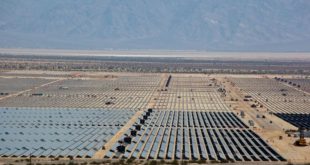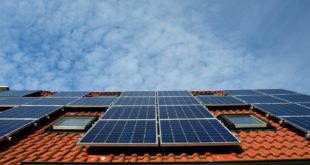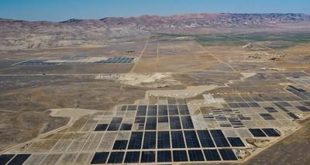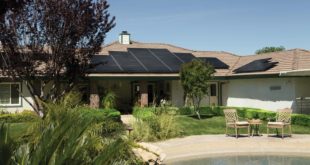
The solar industry has suffered recent blows as manufacturing plants have closed and capacity has been reduced. The European crisis and the trade war between China and EU have also added themselves to the changing market. Continually falling feed-in-tariffs (FITs) have also caused some conflict. Short-term market uncertainty has made some investors wary of solar, yet, long-term predictions for the photovoltaic (PV) market remain healthy. Despite these issues, investment in solar energy still remains a popular decision. A trend that has become more prominent is the move away from the primary PV market (new projects and project rights) towards the secondary market (existing and operational PV installations). Investment in the secondary market is increasing and is starting to become preferential over the primary market as investing in already operational PV installations can offer more security.
The Secondary Market
Currently, there is an estimated 2 million installed PV systems in Europe alone. If a menial 1% was sold as part of the secondary market, this market could be worth more than €1.5 billion. Italy is a prime example of the solar industry’s movement towards this market. In 2011, developers rushed to install and connect 9GWof new solar capacity to beat the FIT deadline. In 2012, the secondary market exploded as private equity firms left their investments and developers strapped for cash tried to sell these projects. Many PV projects have been installed in a similar manner, earlier to obtain higher FITs. The opportunity to buy these existing plants becomes possible as some investors decide to sell their operating systems.
Investment Outlook
Similarly to many industries, investors in the solar market are afraid of unforeseeable liquidity requirements and long-term commitments regardless of the strong predictions for the PV industry. Solar investments often require long-term commitment for up to 20 years. Investors such as pension funds and insurance companies are often looking for high potential, long-term capital, and reliable returns in the solar market. Investing in the secondary market can provide more certainty than from the primary market. By selling an operational PV installation, there are no costs and risks associated with project development and construction. It may offer less return but provides a much higher security than a new PV project. These projects also often receive higher FITs based on their installation date. Nevertheless, one of the greatest issues for investors trying to sell their existing installation is the long chain of brokers. The process is complicated and expensive for both the buyer and the seller.
An international online marketplace such as Milk the Sun can make the entire process more transparent for the players involved. It is a simple user-friendly platform that allows the buyer and seller to be directly connected. The growth of the secondary market is also reflected in Milk the Sun’s platform. When the company started just over a year ago, only 10% of the projects was from the secondary market, currently, approximately 50% of the projects being offered are existing operational PV installations. Based on project trends, Milk the Sun has also found a shift in investor climate towards investing internationally.
Globalization of the Solar Market
The Western European market was once an obvious leader in the solar industry but now, the rest of the world is catching up as demand for solar energy rapidly increases. The Middle Eastern, Latin American, and African markets are all quickly emerging while America, China, and Japan are experiencing significant growth in their solar markets. In the US alone, the solar market grew by 76% in the last year. The global growth rate for 2012 was expected to be 14%. With the globalization of the market, it is no longer useful to only track the countries leading the PV market. To best understand the market, it should be broken down, not only by country, but by region as well as by the PV application type (ie. Ground-mounted, utility, or residential).
Many countries are still providing incentives for solar energy as well, despite its price reduction. Australia has just initiated a subsidy for photovoltaic (PV) power plants with a €36 million budget. They expect 24,000 solar plants with a 115 MW capacity to be installed. This is reflective of a global agreement on the potentials of solar energy and its rise in the energy sector. Solar energy investment continues has been driven by incentives, falling prices, and the rising cost of fossil-fuel prices. With solar energy becoming a net energy producer, the solar market will continue to rise – both primary and secondary markets.
About the author
Felix Krause is co-founder and CEO of Milk the Sun, an international online marketplace for photovoltaic energy connecting rooftop and greenfield owners, roof agents, project developers, installation companies, banks, insurers and investors. Before Milk the Sun Felix Krause, together with his partner Dirk Petschick, founded LuzSolar GmbH – a project developer and management company for PV installations in Germany and the U.K. He holds MSc in International Business Studies from Maastricht University, Netherlands and has previously worked as Key Account Manager for the UK and Netherlands for Philips and Product Manager DACH for Dyrup.
 Alternative Energy HQ solar power for homes, wind energy, and bio fuel issues
Alternative Energy HQ solar power for homes, wind energy, and bio fuel issues



 Thailand, Indonesia, new solar energy hot spots in Asia
Thailand, Indonesia, new solar energy hot spots in Asia The Solar Power Industry Is Finally Producing More Energy Than It Uses
The Solar Power Industry Is Finally Producing More Energy Than It Uses




